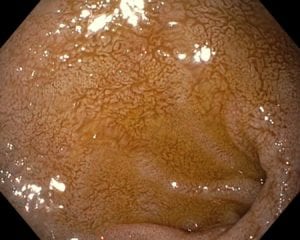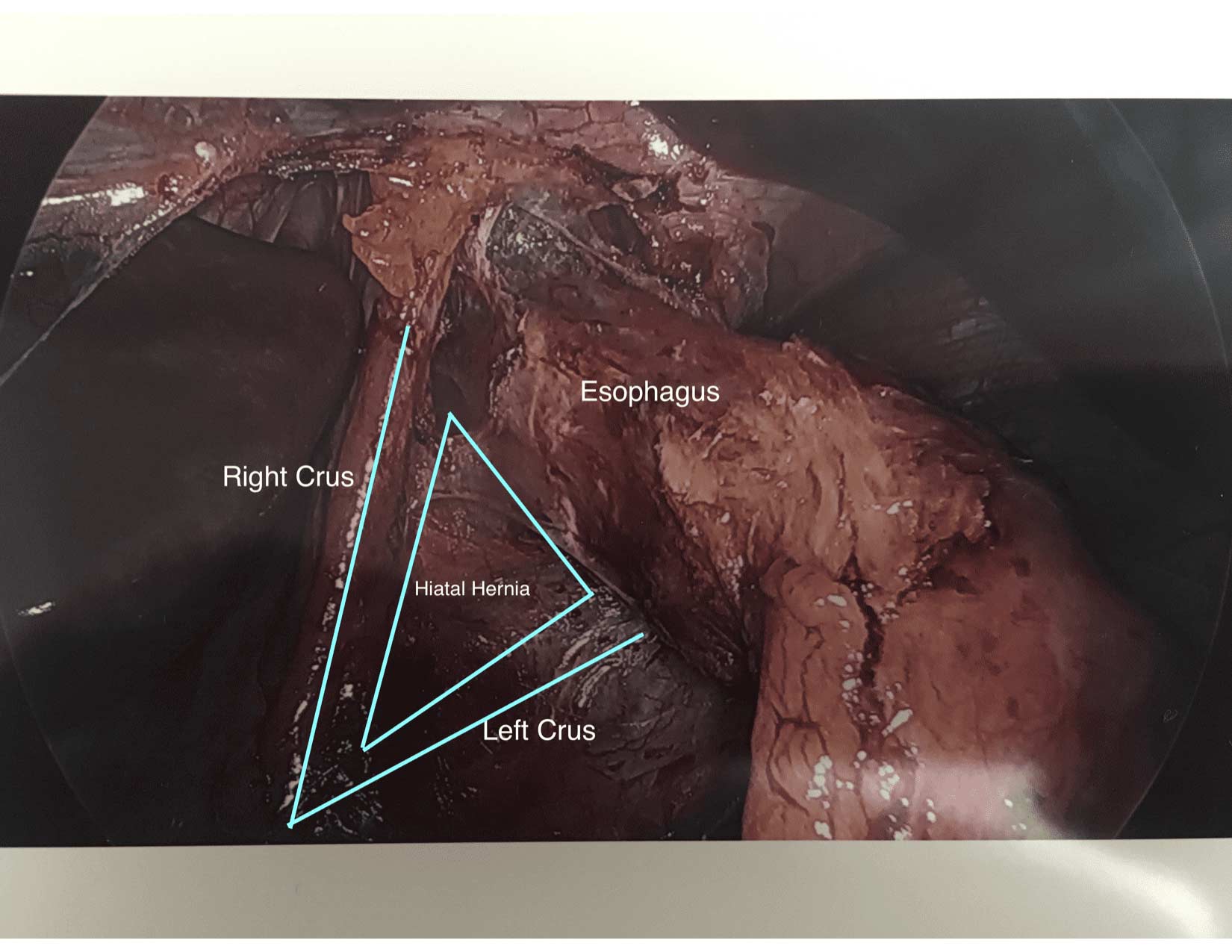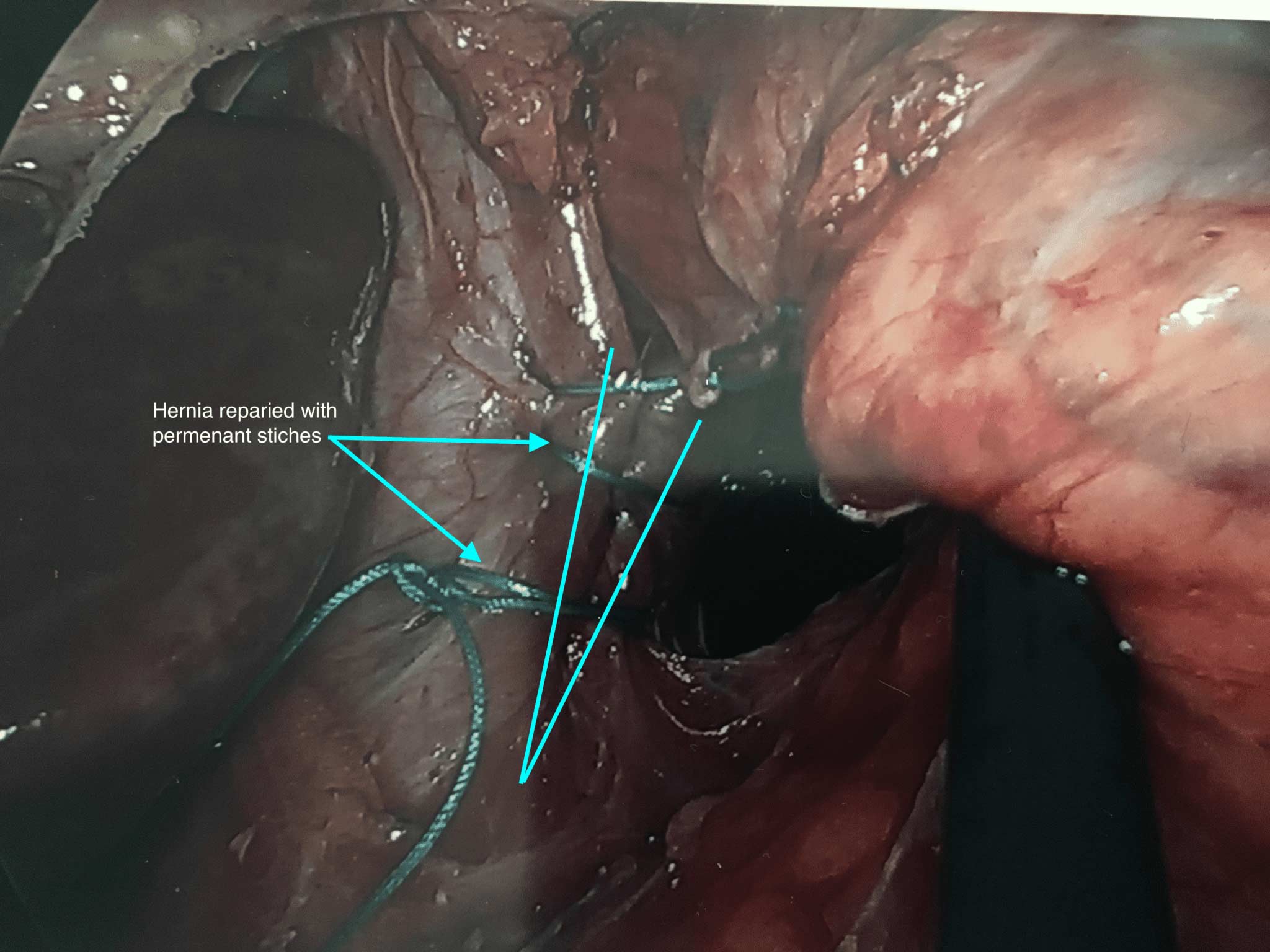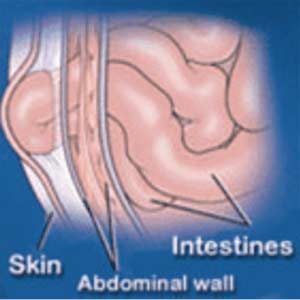Category: Hernia Surgery
Articles
March 22, 2020 6:57 pm
Gastroesophageal Reflux: Bile Vs. Acid
May 14, 2019 12:52 pm
Gastroesophageal (GE) reflux is the condition when the stomach content are able to “reflux” back thru an incompetent lower esophageal sphincter (LES) into the esophagus.
Gastroesophageal reflux Disease (GERD) is the clinical condition which is the result of long standing reflux and results in microscopic and visible changes to the inner lining of the esophagus, esophageal mucosa.
GERD is a non descriptive as to the cause of the condition. It only states that the content of the stomach have been irritating the lining of the esophagus on chronic bases. This can be caused by an anatomical abnormality fo the GE junction (Hiatal Hernia), or may be related to disfunction the LES. Other possible causes of the GERD may be infection (H.Pylori) environmental (stress) and dietary (nicotine, alcohol, caffeine, spicy food) in origin.
So far we have not clarified the chemical nature of the the refluxed content.
In Acid Reflux, the relative acid overproduction of acidic secretion and the exposure of the esophageal mucosa is what needs to be addressed. This is accomplished by acid suppression medications, Anti Histamine (H2 blockers) Proton pump inhibitors (PPI) for example. The physiology, and the mechanism involving this condition is well understood. As a surgeon, we do however see patients who should have had surgical intervention. The initial mode of therapy for a patient with documented acid reflux, and or symptomatic hiatal hernia is placing them on medication. These patients are then recommended to have related upper endoscopy. Patients who do not improve or where deterioration of the esophageal mucosa, presence of precancerous cells, then the patients are referred for surgical intervention.
Bile Reflux, contrary to acid reflux may have very little if anything with the LES. The symptoms experienced by the patient may be as ofter related to the excessive bile in the stomach seen frequently

after cholecystectomy, or in those patients with dysfunctional gallbladder (low EF on HIDA scan).
The treatment of Bile reflux, is Duodenal Switch with without the associated sleeve gastrectomy component in addition to repair of hiatal hernia if present Ann Surg. 2007 Feb; 245(2): 247–253.
Reflux and Hiatal Hernia
April 17, 2017 9:41 am
One of the leading reasons for Gastro-esophageal reflux disease (GERD) is a physical defect called a Hiatal hernia. The esophageal Hiatus is the opening in the diaphragm where the esophagus enters from chest cavity allowing the esophagus to pass into the abdominal space. If the opening in the diaphragm is much larger than the esophagus, it will result in reflux of the stomach secretions and food from the stomach into esophagus. *Note: Graphic surgical pictures below
Hiatal Hernia Causes:
- heavy lifting
- coughing
- obesity
- injury
- persistent vomiting
- age related
Reflux and Hernia Symptoms:
- sour taste
- reflux
- heartburn
- belching
- chest or abdominal pain
- difficulty swallowing
- vomiting
- no symptoms
The treatment includes dietary changes, medication and in those who do not improve surgery.
Hiatal hernia repair includes tightening of the dilated opening of the esophageal hiatus by re-appoximating the separated muscle fibers of the right and the left crus. This tightens the defect in the diaphragm and helps prevent part of the stomach or stomach contents from entering the chest cavity.
You can find further information and dietary changes regarding Hiatal Hernia and GERD here, including information unique to weight loss surgery and Hiatal Hernia. You can also find further surgical information, as well as a surgical video here.
BMI Threshold for Ventral Hernia Repair
July 21, 2016 2:48 pm
“After Ventral Hernia Repair (VHR), complications are most likely to occur in patients with BMI ≥ 40 kg/m2. This subset of patients also had a significantly higher risk of undergoing surgery for a recurrent hernia, suggesting that this group of patients is likely to experience adverse outcomes after VHR and should be counseled to consider bariatric surgery prior to attempts at VHR.” Information on Bariatric Surgery here.
Read more of the original article here….
A hernia is present when part of an internal organ or tissue bulges through a defect or weak area in the belly wall (fascia). The type of hernia you have depends on where it is and how it occurs. Ventral Hernias are named after the location in the body they occur. A ventral hernia is a bulging of the abdominal wall anteriorly. When the hernia is located at the site of a pervious surgical scar then it is called an incisional hernia. A hernia can occur at any location of the abdominal wall however. Further information regarding incisional hernia here.
A Ventral Hernia can develop due to straining, lifting or increased abdominal pressure and is a weakening of the abdominal wall. Usually fat and internal organs bulge outside the facsia that holds the internal organs within the abdominal cavity. This type of hernia can be asymptomatic or cause pain with pressure or exertion. If left untreated, they can become larger or become incarcerated requiring emergent surgical intervention. Dr. Ara Keshishian performs ventral hernia repairs using a laparoscopic technique that may or may not require mesh repair. Mesh is place behind the defect in the abdomonial wall and extends past the hernia edges. Mesh is used to re-enforce the abdominal wall and allowing the healing tissue to form a sturdy foundation to help prevent reoccurrence of the hernia. Videos of Ventral Hernia Repairs here.
- Weight loss Medications compared to surgery February 20, 2024
- SIPS-SADI and ASMBS December 31, 2023
- Survey December 16, 2023
- Long Term Outcome Survey December 1, 2023
- Weight Loss Injection May 10, 2023



